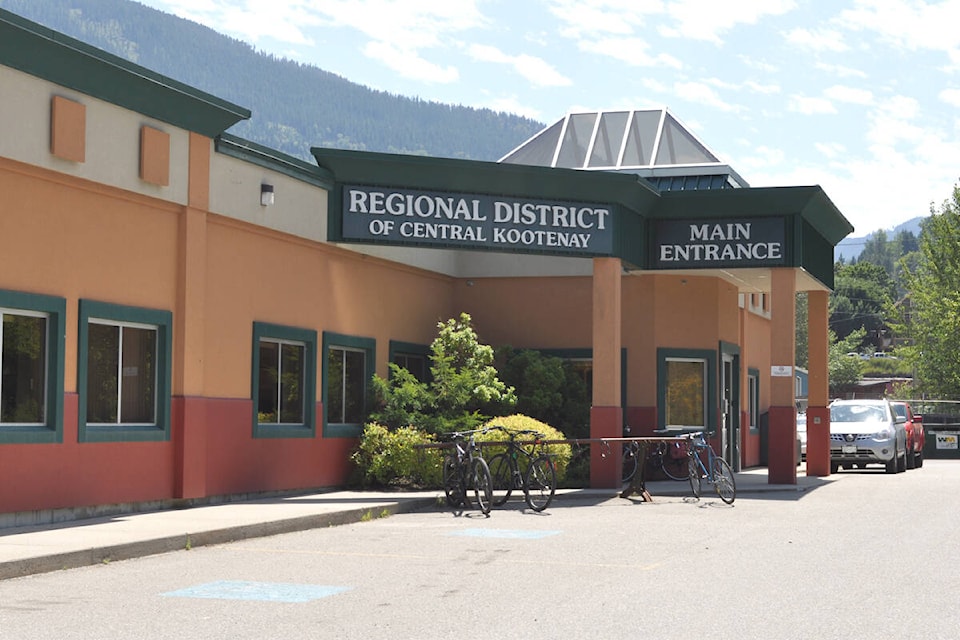by John Boivin
Local Journalism Initiative Reporter, Valley Voice
There’ll be no change in the leadership of the Rural District of Central Kootenay for the next year, as directors chose Area D Director Aimee Watson as chair and Area H Director Walter Popoff as vice-chair.
While Watson was acclaimed to the chair position, Popoff faced a challenge from a director who thought Village governments need a bigger say on the board executive.
“Municipal directors make up 45 per cent of the board’s composition, and we currently don’t have representation,” said Kaslo Mayor Suzan Hewat in her campaign speech to the board. “I’m not saying current directors aren’t doing a good job, but unless you are on a council, it’s difficult to fully understand the complexity of how items get addressed at the council table.”
Popoff noted in his speech that he had three municipal governments in his rural area, and he worked well with them.
Popoff was re-elected by secret ballot, so the vote count was not revealed.
The chairs of the various committees of the board will be selected in December.
Whatshan water project given green light
A plan to draw water from the aquifer at Whatshan Lake near Edgewood cleared another hurdle at the RDCK meeting – but it doesn’t mean the applicant is in business yet.
The Doukhobor Heritage Society plans to draw about 106 cubic metres of water a day from the aquifer, to sell to locals. The money would go to support projects and programs at the non-profit’s retreat at Whatshan Lake.
It’s been a long and complex process for the applicants, but the board gave third and final reading to the Regional District’s part of the approval – to change the zoning of the site from Resort Commercial (C6) to Resort Commercial 2 (C7), which would add ‘small scale water extraction and sales’ as a permitted use.
A report from staff noted no strong reasons came up in a public hearing to show reasonable local opposition to the plan, nor were serious objections raised by the provincial departments of Transport, Natural Resources, Agriculture or Interior Health. The Okanagan Nation Alliance was contacted and objected to the project in 2020, but didn’t respond further as the project proceeded.
“Given that there is no indication that extraction of 106 cubic metres of water per day will have a negative effect on the aquifer, and the limited amount of opposition to the application, staff recommend that the amending Bylaw No. 2733 be given Third Reading by content,” a staff report said.
However, there’s a catch. Staff also recommend that after approving third reading, final adoption be withheld until the transportation ministry decides if the Heritage Society needs a special access permit to use the local roads for their operations.
Directors voted for that option.
Too many cooks spoil Conservation Fund expansion
The complexities of municipal government came crashing down on plans to expand a conservation program into seven additional areas of the regional district.
Area directors asked in August to join the Local Conservation Fund that now comprises Areas A, D, and E. A parcel tax is collected in those areas – about $15 per parcel – and the money raised is used to fund conservation programs around Kootenay Lake.
It’s worked well in that area, and other directors want to join the program.
But where there’s tax, there has to be approval from taxpayers. That can come in the two forms – a referendum, or the Alternative Approval Process (AAP).
The details of the two processes aren’t necessary here – just the fact that they are different forms of approval, and are done in different ways. And depending on the approval process, the subsequent legislation needed to enact the tax-collecting changes as well. It also changes how and where the money can be spent.
Seven electoral areas wanted in on the fund, but each director had their own political and logistical needs for gaining voter approval. If it went ahead like that – some areas having referenda, some having AAPs, some including municipalities in their area, some not, some needing new bylaws, some being able to simply be tacked onto the existing Local Conservation Fund bylaw – it meant expanding the fund was getting complicated. Staff would have been kept busy with paperwork trying to untangle the mess until 2023, CAO Stuart Horn warned.
Heeding the concern, directors approved tabling the expansion of the fund to the December board meeting. Staff will spend the weeks leading up to the meeting figuring out just how each area director wants to proceed in their own district. They’ll then present a co-ordinated plan for directors to approve.
A public consultation process would take place in the areas before any vote was held.
